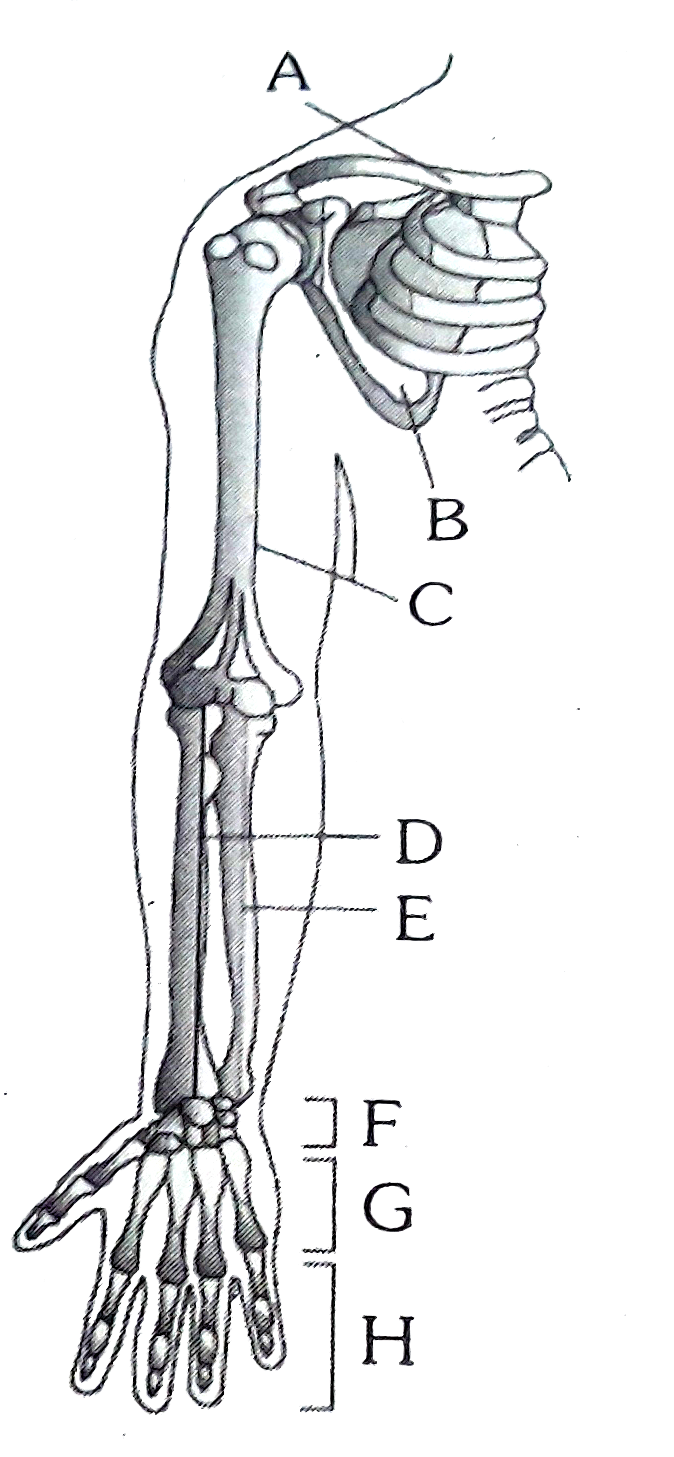There are five animals A, B, C, D and E. The animal A uses its modified forelimbs for flying. The animal B uses its forelimbs for running whereas the animal C uses its forelimbs for grasping. The animal D can live on land as well as in water and uses its forelimbs to prop up the front end of its body when at rest. The animal E which respires by using spiracles and tracheae uses wings for flying but its wings are analogous to the modified forelimbs of animal A.
(a) What could the animals A, B, C, D and E be ?
(b) Why are the forelimbs of animals A, B, C and D called homologous organs ?
(c) What does the existence of homologous organs in animals A, B, C and D tell us about their ancestors ?
(d) Why are the modified forelimbs of animal A and the wings of animal E called analogous organs ?
(e) State whether animals A and E have a common ancestor or not .
The correct Answer is:(a) A : Bird ; B : Lizard ; C : Human ; D : Frog ; E : Insect (b) Because they have the same basic design but perform different functions (c) They are derived from the same ancestor (d) Because they have different basic design but perform similar functions (e) No
Step by step video, text & image solution for There are five animals A, B, C, D and E. The animal A uses its modified forelimbs for flying. The animal B uses its forelimbs for running whereas the animal C uses its forelimbs for grasping. The animal D can live on land as well as in water and uses its forelimbs to prop up the front end of its body when at rest. The animal E which respires by using spiracles and tracheae uses wings for flying but its wings are analogous to the modified forelimbs of animal A. (a) What could the animals A, B, C, D and E be ? (b) Why are the forelimbs of animals A, B, C and D called homologous organs ? (c) What does the existence of homologous organs in animals A, B, C and D tell us about their ancestors ? (d) Why are the modified forelimbs of animal A and the wings of animal E called analogous organs ? (e) State whether animals A and E have a common ancestor or not . by Biology experts to help you in doubts & scoring excellent marks in Class 10 exams.
Updated on:21/07/2023Topper's Solved these Questions
- HEREDITY AND EVOLUTIONBook:LAKHMIR SINGH & MANJIT KAURChapter:HEREDITY AND EVOLUTIONExercise:Very short Answer Type Questions
Explore 1 Video
- HEREDITY AND EVOLUTIONBook:LAKHMIR SINGH & MANJIT KAURChapter:HEREDITY AND EVOLUTIONExercise:Long Answer Type Questions
Explore 5 Videos
- HEREDITY AND EVOLUTIONBook:LAKHMIR SINGH & MANJIT KAURChapter:HEREDITY AND EVOLUTIONExercise:Multiple Choice Question
Explore 1 Video
- CONTROL AND COORDINATION Book:LAKHMIR SINGH & MANJIT KAURChapter:CONTROL AND COORDINATION Exercise:Very Short Answer Type Questions
Explore 5 Videos
- HOW DO ORGANISM REPRODUCEBook:LAKHMIR SINGH & MANJIT KAURChapter:HOW DO ORGANISM REPRODUCEExercise:Exercise
Explore 23 Videos
Similar Questions
Knowledge Check
Which one of these animals can live on land as well as in water?
ADeerBGiraffeCFrogDFoxTransgenic animal are use for :-
AStudy of diseaseBBiological product, vaccine safetyCBoth 1 and 2DNone of theseAnimals living on a land and in water
AAmbiguousBAmphibianCAmorphousDAmbivalent

